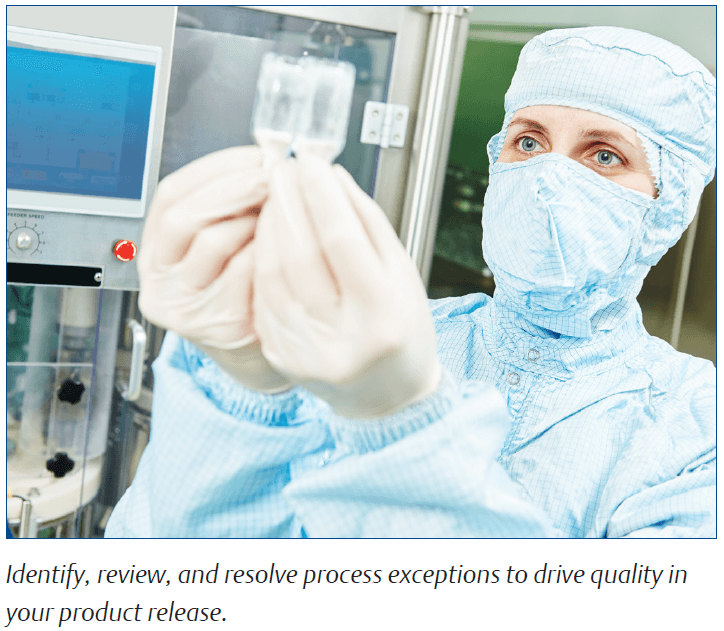Review by exception recordkeeping for pharmaceutical and biopharmaceutical producers collects the critical process exceptions during production runs. Good automated manufacturing practice (GAMP) approach for these electronic production records are:
…processes are maintained within defined tolerances, data & events are recorded; process data is monitored at appropriate intervals, alerts and alarms are generated when tolerances are exceeded. Electronic records are trustworthy, accurate and secure.
In an Intech article, Three strategies help life sciences companies implement more successful review by exception, Emerson’s Emilee Cook shares ways for these manufacturers to improve this workflow. She opens highlighting one global biopharmaceutical manufacturer who:
…has begun to improve operations performance by implementing a live review-by-exception (RBE) process. The process is integrated into the plant’s production review and allows the plant’s quality assurance (QA) team to identify process deviations and their severity as they occur.
The three strategies include:
- Expand automation to empower employees
- Build staff support with user-friendly solutions
- Standardize technology for fast ROI
 I’ll share Emilee’s points on the first strategy and invite you to read the article for the other two. Before RBE was implemented at this biotech facility:
I’ll share Emilee’s points on the first strategy and invite you to read the article for the other two. Before RBE was implemented at this biotech facility:
…a typical batch release took three to four weeks to complete. The QA team ran a batch report—typically hundreds of pages long—and reviewed, logged, and manually cleared each exception. Batches were held until review completion, making the cumbersome manual review process a bottleneck for timely release.
A digital transformation of the RBE process, including the Syncade Quality Review Manager software:
…digitalized and automated many of the steps necessary to safely improve and expedite batch releases. Now, within 10 minutes of an exception, the software identifies it, logs it, and notifies the team. With faster notification of exceptions, QA personnel can fix problems faster, and track patterns to identify process problems and eliminate them earlier.
For example:
…the team identified a problem with a salt feeder not responding properly. Fixing the problem required an operator to manually open and close a butterfly valve. This manual intervention created more than 150 exceptions for each buffer prep application.
This digital transformation drove big operational results.
Digitalization of the review process has allowed the QA team to safely auto-release 50–60 percent of batches immediately after completion… Average batch release time went from four weeks to six hours.
Read the article for the other two strategies to help drive more successful and efficient operations.
Visit the Life Sciences & Medical section on Emerson.com for more on the technologies and solutions to drive improve business results. You can also connect and interact with other pharmaceutical and biopharmaceutical industry experts in the Life Sciences group in the Emerson Exchange 365 community.

